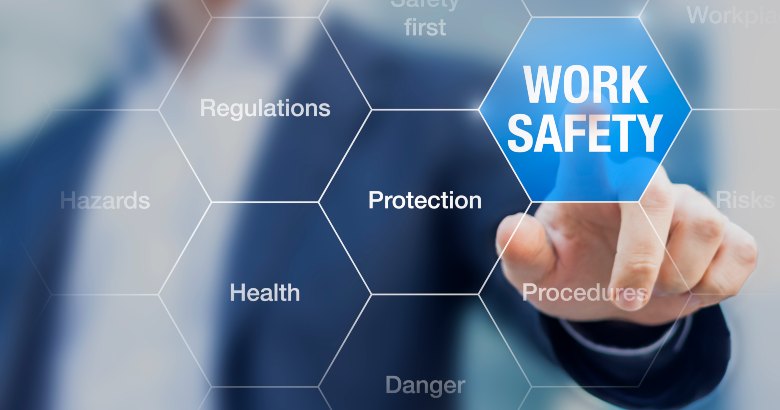A quick Google search of “reopening” and “safety” brings up dozens of articles about protocols to keep employees physically safe—or at least create the illusion of doing so—but what are organizations doing to promote the emotional and psychological health of their returning employees?
Feeling safe at work—in all three dimensions of safety—is an essential element of “belonging,” which more and more organizations and managers are realizing is key to creating a productive, engaged workplace with loyal, engaged employees.
Learning leaders can help shine some light on elements of workplace safety that may not be obvious but that will play a critical role in determining whether their organization successfully negotiates “reopening,” whether that means everyone is back on site, an official shift to a fully remote workplace, or a hybrid that combines on-site and remote members or days or both.
What IS workplace ‘safety’?
While pretty much everyone agrees that employees need to and should feel “safe” at work, there’s little consensus on what that means. Workplace safety encompasses three dimensions: Physical, emotional, and psychological.
Physical safety
In the COVID era, physical safety has taken on new layers of meaning. In addition to protocols designed to prevent accidents and injuries, physical safety measures aim to limit employees’ risk of exposure to COVID-19—and other illnesses as well. The enhanced cleaning and distancing, along with requirements to wear masks, all but eliminated cold and flu season last year, for example.
As companies reopen their offices, they are weighing whether to require masking and distancing and how extensively to beef up their pre-COVID cleaning standards or air-filtration systems. Some companies are also considering requiring that returning employees be vaccinated against COVID-19 or that they disclose their vaccination status.
Which of these measures an organization takes depends on several factors, including state and local laws, the type and size of the organization, and the views of the owners or executives making the decisions. Those decisions are also likely to have an enormous impact on whether employees feel emotionally and psychologically safe as they return to the office.
Emotional safety
Even in situations where people are physically safe, they might not feel safe. This touches on emotional safety, a term explained by James Huysman in Psychology Today: “Emotional safety comes from within us. It is the ‘knowing’ of what we’re feeling; the ability to be able to identify our feelings and then take the ultimate risk of feeling them.”
Talking about emotional safety at work moves many managers outside their comfort zone. Keeping people physically safe is easier to understand and talk about somehow than ensuring that people feel safe.
In post-COVID workplaces, employees might feel emotionally unsafe because they cannot control their environment and potential exposure. Some people are unprotected, even if they have been vaccinated, because they have weakened immune systems; others have immunocompromised family members, children who are not yet able to be vaccinated, or other reasons for feeling—and being—vulnerable.
Others simply have lost trust in other people, whether they don’t trust that their coworkers are vaccinated or they don’t trust their organizations’ policies to keep them safe or they’re just not ready to jump back into spending several hours a day indoors with lots of other people.
It’s not enough for corporate leaders to explain their process and the steps they are taking to create a safe workspace. Leaders also need to address employees’ anxieties. Planning ahead and being transparent with employees, well ahead of the date managers expect to see those workers in the office, is a good start.
Learning leaders can help out here with coaching for managers, job aids and short training for employees on reopening processes, and efforts to facilitate clear communications between workers and managers.
The success of these measures relies on workers feeling comfortable raising any concerns they have with their managers, though—a function of psychological safety.
Psychological safety
According to Timothy Clark’s Four Stages of Psychological Safety, “Psychological safety is a condition in which you feel (1) included, (2) safe to learn, (3) safe to contribute, and (4) safe to challenge the status quo—all without fear of being embarrassed, marginalized, or punished in some way.”
Creating these conditions is a start; when people do speak up, they need to know that someone—a leader, perhaps someone in management, someone who can do something—is listening.
Unfortunately, many workplaces fall short of this ideal.
That’s unfortunate because of the toll it takes on individual workers, of course, but it’s also detrimental to the organization. Research conducted as part of Google’s ReWork initiative in 2015 found that psychological safety was one of five characteristics of high-functioning teams; in fact it was “far and away the most important” of the five.
Building a culture of psychological safety requires more than putting up signs reminding workers to wash their hands and socially distance. It demands that leaders show empathy and understand that everyone will experience safety and the reopening of the office differently. It also requires an openness to hearing about workers’ disparate experiences without becoming angry or defensive.
“Leaders can set the stage for incremental change by establishing team expectations for factors that contribute to psychological safety. Doing so will help encourage innovation, instead of sabotaging it,” according to the Center for Creative Leadership.
To accomplish this, leaders can create processes and norms around communicating about problems, resolving conflict, and responding to failure, errors, or bad news. These “power skills” are all areas where learning leaders can offer guidance and training.
When planning and implementing a reopening, leaders also need to understand that creating psychological safety will take time. And in organizations where some workers were on-site throughout the pandemic, leaders and coworkers need to acknowledge the risks and additional work burdens those colleagues carried, as well as the anxiety that an influx of people might be triggering for them.
Explore leadership issues with your peers
Explore the strategies and skills required to navigate the needs of today’s ever-changing workplace with your learning leadership peers. Join the Learning Leaders Alliance, a vendor-neutral global community for learning leaders who want to stay ahead of the curve and for aspiring leaders wanting to build their skillsets.
The LLA and Learning Solutions are exploring issues that learning leaders face as their organizations adjust to the “new normal” in the Learning Leaders Global Online Forum, July 21–22.
The Learning Guild’s Alliance Membership package includes access to exclusive digital events, including the Online Forum, as well as content curated for today’s modern learning leader, opportunities to attend in-person learning leadership events held around the globe, and more. See the details here.










